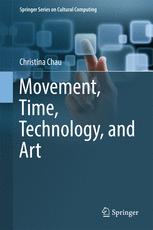

Most ebook files are in PDF format, so you can easily read them using various software such as Foxit Reader or directly on the Google Chrome browser.
Some ebook files are released by publishers in other formats such as .awz, .mobi, .epub, .fb2, etc. You may need to install specific software to read these formats on mobile/PC, such as Calibre.
Please read the tutorial at this link: https://ebookbell.com/faq
We offer FREE conversion to the popular formats you request; however, this may take some time. Therefore, right after payment, please email us, and we will try to provide the service as quickly as possible.
For some exceptional file formats or broken links (if any), please refrain from opening any disputes. Instead, email us first, and we will try to assist within a maximum of 6 hours.
EbookBell Team

5.0
100 reviewsThis book explores the ways in which artists use technology to create different perceptions of time in art in order to reflect on contemporary relationships to technology. By considering the links between technology, movement and contemporary art, the book explores changing relationship between temporality in art, art history, media art theory, modernity, contemporary art, and digital art.
This book challenges the dominant view that kinetic art is an antiquated artistic experiment and considers the changing perception of kinetic art by focusing on exhibitions and institutions that have recently challenged the notion of kinetic art as a marginalised and forgotten artistic experiment with mechanical media. This is achieved by deconstructing Frank Popper’s argument that kinetic art is a precursor to subsequent explorations in the intersections between art, science and technology.
Rather than pandering to the prevailing art historical assumption that kinetic sculpture is merely a precursor to art in a digital culture, the book proposes that perhaps kineticism succeeded too well, where movement has become a ubiquitous element of the aesthetic of contemporary art. If, as Boris Groys has recently suggested, installation has become the dominant mode of art in the contemporary age, then movement in real time with the viewer is used to aestheticise and explore the facets of our peculiar time.